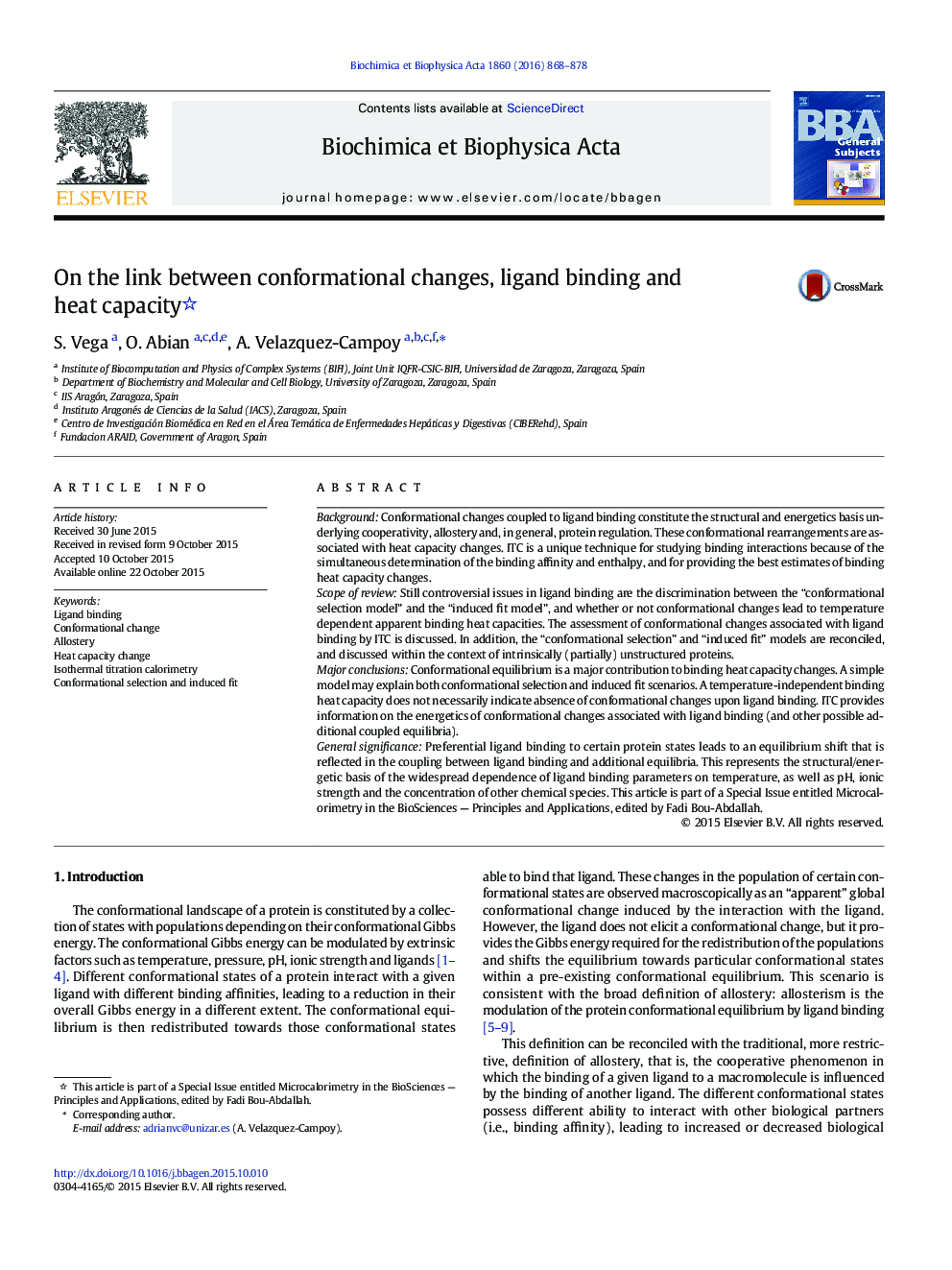| کد مقاله | کد نشریه | سال انتشار | مقاله انگلیسی | نسخه تمام متن |
|---|---|---|---|---|
| 1947327 | 1054593 | 2016 | 11 صفحه PDF | دانلود رایگان |

• Ligand-induced conformational changes constitute the structural and energetics basis for protein regulation.
• Conformational equilibrium is a major contribution to binding heat capacity changes.
• ITC provides the best estimates of binding heat capacity changes.
• ITC provides information on the energetics of equilibria coupled to ligand binding, in particular conformational equilibrium.
• Conformational selection and induced fit model can be reconciled within the context of a general model.
BackgroundConformational changes coupled to ligand binding constitute the structural and energetics basis underlying cooperativity, allostery and, in general, protein regulation. These conformational rearrangements are associated with heat capacity changes. ITC is a unique technique for studying binding interactions because of the simultaneous determination of the binding affinity and enthalpy, and for providing the best estimates of binding heat capacity changes.Scope of reviewStill controversial issues in ligand binding are the discrimination between the “conformational selection model” and the “induced fit model”, and whether or not conformational changes lead to temperature dependent apparent binding heat capacities. The assessment of conformational changes associated with ligand binding by ITC is discussed. In addition, the “conformational selection” and “induced fit” models are reconciled, and discussed within the context of intrinsically (partially) unstructured proteins.Major conclusionsConformational equilibrium is a major contribution to binding heat capacity changes. A simple model may explain both conformational selection and induced fit scenarios. A temperature-independent binding heat capacity does not necessarily indicate absence of conformational changes upon ligand binding. ITC provides information on the energetics of conformational changes associated with ligand binding (and other possible additional coupled equilibria).General significancePreferential ligand binding to certain protein states leads to an equilibrium shift that is reflected in the coupling between ligand binding and additional equilibria. This represents the structural/energetic basis of the widespread dependence of ligand binding parameters on temperature, as well as pH, ionic strength and the concentration of other chemical species. This article is part of a Special Issue entitled Microcalorimetry in the BioSciences — Principles and Applications, edited by Fadi Bou-Abdallah.
Journal: Biochimica et Biophysica Acta (BBA) - General Subjects - Volume 1860, Issue 5, May 2016, Pages 868–878